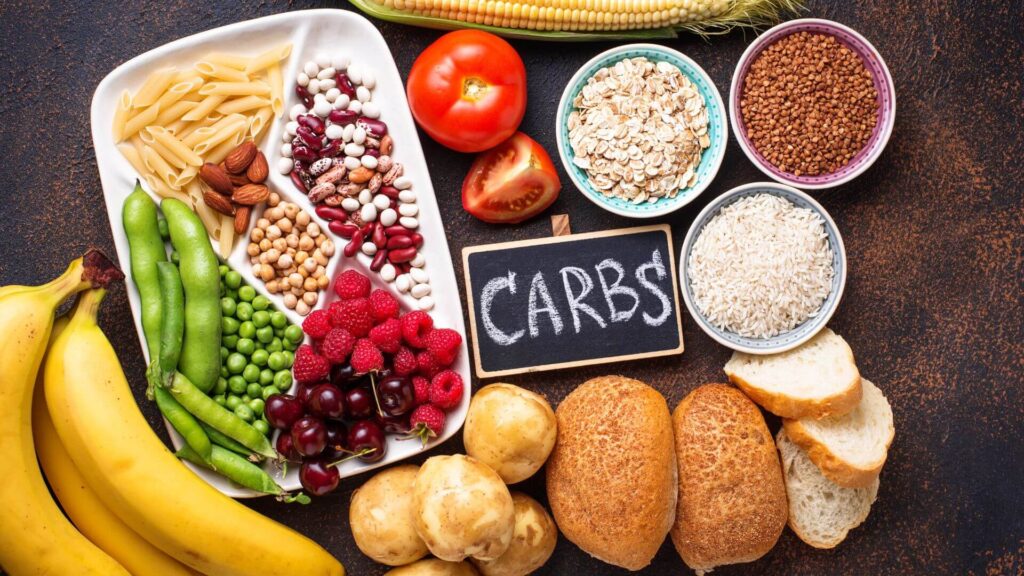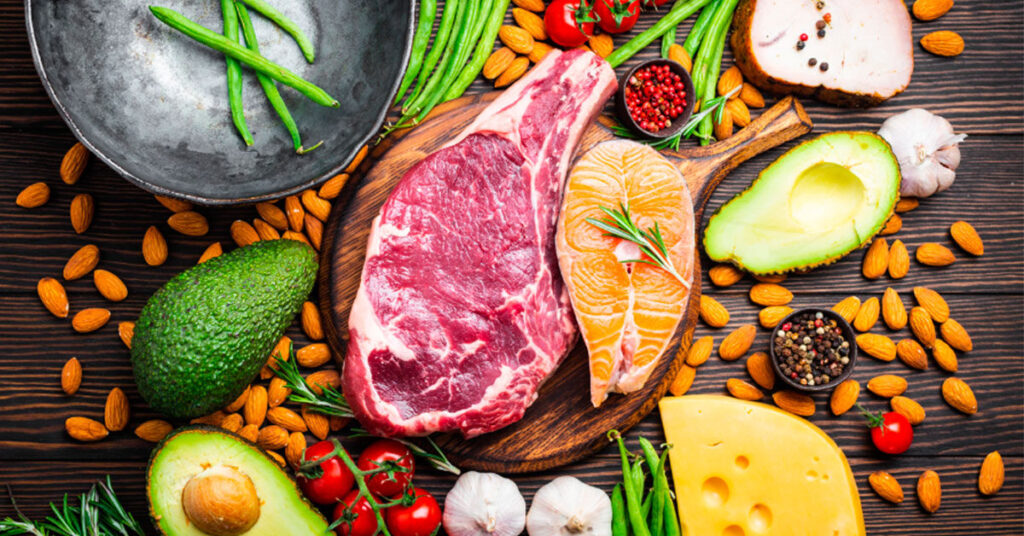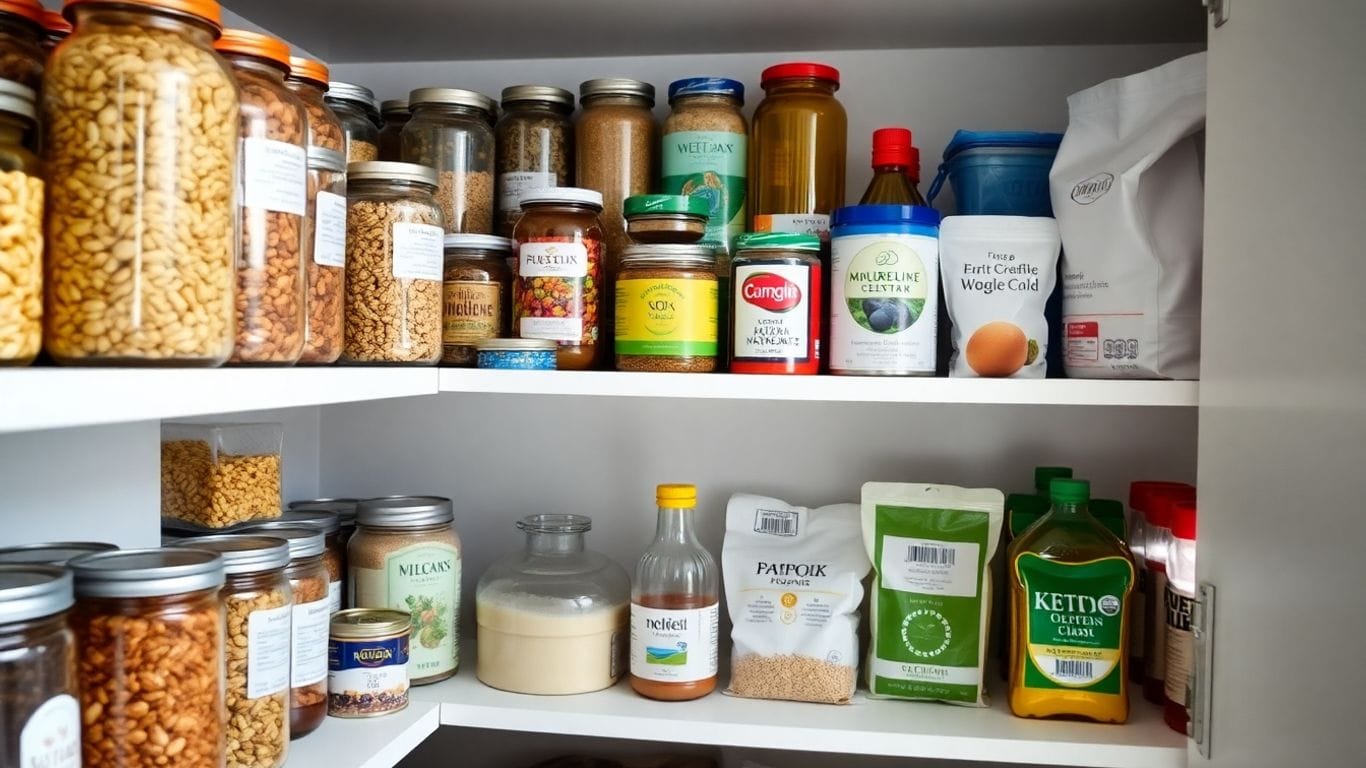Hey there! Have you ever found yourself scrolling through social media, seeing countless before-and-after photos, and hearing buzz about the “low-carb diet” as the magic bullet for weight loss and better health? It’s a popular topic, for sure, and for good reason – many people swear by it. But with so much information, and often misinformation, floating around, it’s natural to wonder: does low carb really work? And perhaps more importantly, how exactly does drastically reducing carbohydrates impact our bodies, both in the short and long term?
As a seasoned professional in health and nutrition, I’ve spent years sifting through the science, separating fact from fad. My goal here is to give you a comprehensive, no-nonsense look at the low-carb diet. We’ll dive deep into the mechanisms, the benefits, the potential pitfalls, and how to approach it safely and effectively if it’s something you’re considering. This isn’t just about losing weight; it’s about understanding your body and making informed choices for your well-being. So, let’s embark on this journey to uncover the truth about low-carb living.
What Exactly is a Low-Carb Diet? A Foundational Understanding
Before we dissect its effects, let’s define what we mean by “low carb.” It’s not a one-size-fits-all diet, but rather a spectrum that restricts carbohydrate intake significantly more than the average Western diet.
Defining Low-Carb: More Than Just “No Bread”
At its core, a low-carb diet emphasizes reducing foods high in carbohydrates, such as sugars, starches (bread, pasta, rice, potatoes), and often even certain fruits and legumes. In their place, it encourages higher consumption of proteins and healthy fats.
The degree of carbohydrate restriction can vary widely:
- Standard Low-Carb: Typically involves consuming less than 130 grams of carbohydrates per day. This is a more moderate approach, often focusing on whole, unprocessed carbs from vegetables and some fruits.
- Ketogenic Diet (Keto): This is the most stringent form of a low-carb diet, usually limiting carbohydrate intake to 20-50 grams per day. The primary goal of keto is to induce a metabolic state called ketosis.
For context, the U.S. Dietary Guidelines recommend that carbohydrates make up 45-65% of total daily calories. For someone eating 2000 calories, this translates to 225-325 grams of carbs daily. Clearly, a low-carb approach is a significant departure from these guidelines.
The Evolution of Low-Carb: A Brief History
While it might seem like a modern trend, the concept of restricting carbohydrates for health and weight loss isn’t new.
- 19th Century Origins: One of the earliest documented low-carb diets was developed by William Banting in the mid-1800s. His “Letter on Corpulence” described a diet low in starches and sugars, which helped him lose a significant amount of weight and became widely popular.
- Dr. Atkins’ Revolution: In the 1970s, Dr. Robert Atkins popularized his “Atkins Diet,” which advocated for very low carbohydrate intake, particularly in the initial phases. This diet brought low-carb eating into the mainstream consciousness and sparked considerable debate.
- Modern Resurgence: In recent decades, spurred by growing concerns about obesity, type 2 diabetes, and the perceived failures of low-fat diets, low-carb approaches have seen a massive resurgence. This includes the rise of keto, paleo, and various other carbohydrate-restricted eating patterns.
The continuous evolution and popularity of low-carb diets suggest there’s something compelling about their approach. But what happens inside your body when you switch from a carb-fueled system to one that’s carb-deprived?
The Body’s Metamorphosis: How Low Carb Affects Your Physiology

Understanding how a low-carb diet works requires a dive into the intricate metabolic processes that govern our energy production. When you cut carbs, your body undergoes a remarkable shift.
The Energy Source Switch: From Glucose to Fat and Ketones
Normally, carbohydrates are the body’s primary and preferred source of energy. When you eat carbs, they are broken down into glucose, which is then used by cells for fuel or stored as glycogen in the liver and muscles.
However, when carbohydrate intake is severely restricted (especially below 50 grams per day), your body’s glucose and glycogen stores become depleted. This triggers a metabolic adaptation:
- Gluconeogenesis: Initially, the liver starts producing glucose from non-carbohydrate sources like amino acids (from protein) and glycerol (from fat) in a process called gluconeogenesis. This is a temporary measure.
- Fat Adaptation: As glucose remains scarce, the body increasingly turns to fat as its main energy source. Your cells become more efficient at burning stored body fat and dietary fat for fuel.
- Ketosis and Ketone Production: When fat breakdown is significantly increased, the liver produces molecules called ketones (beta-hydroxybutyrate, acetoacetate, and acetone). These ketones can cross the blood-brain barrier and serve as an alternative fuel source for the brain, heart, and other organs. This metabolic state is known as ketosis.
Key Takeaway: The fundamental shift in a low-carb diet is moving from a glucose-dependent metabolism to one that is fat-adapted and, in stricter forms, ketone-driven.
Hormonal Responses: Insulin, Glucagon, and Beyond
This metabolic switch is heavily influenced by hormonal changes, particularly involving insulin and glucagon.
- Insulin: Often called the “storage hormone,” insulin is released in response to rising blood glucose levels after eating carbohydrates. Its primary roles are to move glucose from the blood into cells and to promote fat storage. On a low-carb diet, with reduced glucose intake, insulin levels drop significantly. Lower insulin levels:
- Promote Fat Burning: Less insulin means the body is less inclined to store fat and more inclined to release and burn it for energy.
- Reduce Water Retention: Insulin also signals the kidneys to retain sodium, which in turn leads to water retention. Lower insulin levels lead to increased sodium and water excretion, often resulting in rapid initial weight loss.
- Glucagon: This hormone acts in opposition to insulin. When blood glucose levels are low, glucagon signals the liver to release stored glucose (glycogenolysis) or produce new glucose (gluconeogenesis). In a low-carb state, glucagon levels tend to be higher, supporting the body’s glucose needs from non-carb sources.
- Other Hormones: Low-carb diets can also influence other hormones related to appetite and satiety, such as leptin and ghrelin, potentially leading to reduced hunger.
In essence: By reducing carbohydrate intake, you’re essentially turning down the “insulin tap,” allowing your body to more readily access and burn its fat stores.
Impact on Blood Sugar and Insulin Sensitivity
One of the most profound effects of a low-carb diet is on blood sugar regulation.
- Stable Blood Sugar: Without the constant influx of carbohydrates, blood glucose levels remain much more stable. There are fewer dramatic spikes and crashes, which can be beneficial for mood, energy levels, and preventing cravings.
- Improved Insulin Sensitivity: Chronically high insulin levels can lead to insulin resistance, a condition where cells become less responsive to insulin’s signals. This is a hallmark of type 2 diabetes. By consistently keeping insulin levels low, a low-carb diet can significantly improve insulin sensitivity, making the body’s cells more efficient at utilizing insulin. This is a primary reason why low-carb diets are so effective for managing or even reversing type 2 diabetes.
The Reported Benefits: Why People Turn to Low Carb

The physiological changes brought about by a low-carb diet translate into a range of reported health benefits, making it an attractive option for many.
1. Weight Loss: The Most Common Driver
Let’s be honest, for most people, weight loss is the primary motivator for trying a low-carb diet. And indeed, it can be highly effective.
- Initial Water Loss: As mentioned, lower insulin levels lead to increased excretion of sodium and water, resulting in rapid initial weight loss (often several pounds in the first week). This is largely water weight, but it can be very motivating.
- Reduced Appetite and Calorie Intake: One of the most significant advantages often cited by low-carb dieters is a natural reduction in hunger. Proteins and fats are more satiating than carbohydrates, leading to fewer cravings and a tendency to eat fewer calories overall without consciously trying. Studies have shown that people on low-carb diets often spontaneously eat less.
- Increased Fat Burning: With the body primarily burning fat for fuel, it becomes highly efficient at tapping into stored body fat for energy, facilitating sustained weight loss.
2. Blood Sugar Control and Diabetes Management
This is arguably where low-carb diets shine the brightest, particularly for individuals with insulin resistance, prediabetes, or type 2 diabetes.
- Stabilized Blood Glucose: By eliminating the primary source of blood sugar spikes, low-carb diets lead to remarkably stable blood glucose levels.
- Reduced Need for Medication: Many individuals with type 2 diabetes on a low-carb diet are able to significantly reduce or even eliminate their need for blood sugar-lowering medications, under medical supervision.
- Improved HbA1c: Studies consistently show that low-carb diets lead to significant reductions in HbA1c (a measure of average blood sugar over 2-3 months).
- Potential for Remission: Emerging research suggests that for some individuals, a well-managed low-carb or ketogenic diet can even lead to remission of type 2 diabetes.
3. Improved Cardiovascular Health Markers
While some initial concerns existed about high fat intake, recent research suggests that a well-formulated low-carb diet can improve several markers of cardiovascular health.
- Triglycerides: Low-carb diets are highly effective at lowering elevated triglyceride levels, a key risk factor for heart disease.
- HDL Cholesterol: Often referred to as “good cholesterol,” HDL levels tend to increase significantly on low-carb diets.
- LDL Cholesterol (Particle Size): While total LDL cholesterol might sometimes increase, studies often show a shift towards larger, less dense LDL particles, which are considered less atherogenic (less likely to cause plaque buildup in arteries) than smaller, denser particles.
- Blood Pressure: Many individuals experience a reduction in blood pressure on a low-carb diet, often linked to weight loss and improved insulin sensitivity.
4. Enhanced Mental Clarity and Energy Levels
Many people report feeling more focused, having sustained energy, and experiencing less “brain fog” on a low-carb diet, especially once they are fat-adapted.
- Stable Blood Sugar: Eliminating blood sugar rollercoasters prevents the energy crashes and dips in concentration associated with them.
- Ketones as Brain Fuel: For stricter low-carb diets that induce ketosis, ketones provide a very efficient and stable fuel source for the brain, potentially leading to enhanced cognitive function.
5. Other Potential Benefits
- Reduced Seizures: The ketogenic diet was originally developed in the 1920s as a treatment for epilepsy, particularly in children who didn’t respond to medication. It remains an effective therapeutic option for this condition.
- Acne Improvement: Some anecdotal evidence and preliminary studies suggest that low-carb diets may improve acne by reducing insulin-like growth factor 1 (IGF-1), a hormone linked to acne development.
- PCOS Management: Polycystic Ovary Syndrome (PCOS) is often linked to insulin resistance. Low-carb diets can significantly improve insulin sensitivity, reduce androgen levels, and help manage symptoms of PCOS.
Potential Downsides and Considerations: It’s Not a Panacea
While the benefits are compelling, it’s crucial to acknowledge that low-carb diets are not without their potential challenges and considerations. What works for one person may not work for another.
1. The “Keto Flu” and Initial Side Effects
When first transitioning to a very low-carb diet (especially ketogenic), many people experience a cluster of symptoms known as the “keto flu.” These typically last a few days to a week as the body adapts to burning fat and ketones.
- Symptoms: Headaches, fatigue, nausea, irritability, dizziness, muscle cramps, and difficulty concentrating.
- Cause: Primarily due to electrolyte imbalances (sodium, potassium, magnesium) and dehydration as the body sheds water weight.
- Mitigation: Ensuring adequate electrolyte intake (e.g., bone broth, salting food generously, potassium-rich low-carb foods like avocado, magnesium supplements) and staying well-hydrated can significantly alleviate these symptoms.
2. Nutritional Deficiencies
Restricting entire food groups always carries the risk of nutrient deficiencies if not planned carefully.
- Fiber: Many high-carb foods (whole grains, fruits, legumes) are excellent sources of fiber. Without careful planning, a low-carb diet can be low in fiber, leading to constipation.
- Solution: Emphasize non-starchy vegetables, avocados, nuts, and seeds.
- Micronutrients: Certain fruits, starchy vegetables, and whole grains are rich in vitamins (e.g., B vitamins, vitamin C) and minerals (e.g., potassium, magnesium).
- Solution: Focus on a wide variety of nutrient-dense, low-carb foods, including leafy greens, colorful non-starchy vegetables, organ meats, and fatty fish. Supplementation might be considered in some cases.
3. Potential Impact on Gut Health
The gut microbiome thrives on a diverse range of fibers, many of which come from carbohydrate-rich plant foods. Drastically reducing these can alter the gut microbiota.
- Concern: A less diverse microbiome might have implications for overall health, immunity, and even mood.
- Research: This is an area of ongoing research. Some studies suggest that while initial changes occur, the microbiome can adapt, and the impact may vary depending on the specific low-carb foods consumed (e.g., including fermented foods and diverse non-starchy vegetables).
4. Sustainability and Adherence
For many, sticking to a strict low-carb diet long-term can be challenging.
- Social Eating: Navigating social gatherings, restaurants, and holidays can be difficult when avoiding common foods like bread, pasta, and desserts.
- Restriction Fatigue: Some people find the dietary restrictions too limiting and feel deprived, leading to a higher likelihood of “falling off the wagon.”
- Individual Preference: Not everyone enjoys the types of foods emphasized in a low-carb diet, or they may simply feel better with a moderate amount of carbohydrates.
5. Other Considerations and Who Should Be Cautious
- Kidney Health: While generally safe for healthy individuals, people with pre-existing kidney disease should consult their doctor before starting a high-protein diet, as excessive protein intake can potentially stress the kidneys.
- Gallbladder Issues: As low-carb diets often involve higher fat intake, individuals who have had their gallbladder removed or have gallbladder issues might experience digestive discomfort.
- Certain Medications: Individuals on medications for diabetes (especially insulin or sulfonylureas) or high blood pressure need close medical supervision when starting a low-carb diet, as medication dosages will likely need adjustment.
- Pregnancy and Breastfeeding: The safety and efficacy of very low-carb diets during pregnancy and breastfeeding are not well-established, and caution is advised.
- Disordered Eating History: For individuals with a history of disordered eating, highly restrictive diets can sometimes trigger unhealthy patterns.
It’s crucial to consult with a healthcare professional or a registered dietitian before making significant dietary changes, especially if you have underlying health conditions.
Implementing a Low-Carb Diet: A Practical Guide

If you’ve weighed the pros and cons and decided a low-carb approach is right for you, here’s a practical guide to get started safely and effectively.
1. Understanding Macronutrient Ratios
The key to a successful low-carb diet lies in adjusting your macronutrient intake. While exact ratios can vary, a general guideline is:
- Carbohydrates: 20-130 grams per day (stricter for keto, more moderate for general low-carb). Focus on net carbs (total carbs minus fiber).
- Protein: Moderate intake, typically 1.2-1.7 grams per kilogram of body weight (or 20-35% of calories). Essential for muscle maintenance and satiety.
- Fats: Make up the majority of your remaining calories (50-75%). This is your primary fuel source. Prioritize healthy fats.
Example for a 2000-calorie diet (moderate low-carb, ~100g carbs):
- Carbs (20%): 400 calories / 4 cal/g = 100g
- Protein (30%): 600 calories / 4 cal/g = 150g
- Fats (50%): 1000 calories / 9 cal/g = 111g
2. What to Eat: Building Your Low-Carb Plate
Focus on whole, unprocessed foods.
- Proteins:
- Meat: Beef, lamb, pork, chicken, turkey, game meats
- Fish and Seafood: Salmon, mackerel, tuna, sardines, shrimp, scallops
- Eggs: Whole eggs are excellent
- Dairy (full-fat, if tolerated): Greek yogurt, cottage cheese, hard cheeses
- Healthy Fats:
- Avocado and avocado oil
- Olive oil (extra virgin)
- Nuts and seeds (almonds, walnuts, chia seeds, flaxseeds)
- Fatty fish
- Butter, ghee
- Coconut oil
- Non-Starchy Vegetables:
- Leafy greens: Spinach, kale, lettuce, Swiss chard
- Cruciferous vegetables: Broccoli, cauliflower, Brussels sprouts, cabbage
- Asparagus, green beans, bell peppers, zucchini, cucumber, mushrooms, tomatoes
- Limited Fruits (moderate low-carb): Berries (strawberries, blueberries, raspberries) in moderation due to lower sugar content.
- Beverages: Water, black coffee, unsweetened tea.
3. What to Limit or Avoid: The High-Carb Culprits
- Sugary Foods: Soft drinks, fruit juice, candy, cakes, pastries, ice cream.
- Grains: Wheat (bread, pasta, pastries), rice, oats, barley, quinoa, corn.
- Starchy Vegetables: Potatoes, sweet potatoes, corn, peas.
- Legumes (some low-carb plans allow small amounts): Beans, lentils, chickpeas.
- Most Fruits: Especially tropical fruits like mango, pineapple, banana (high in sugar).
- Processed Foods: Many packaged snacks, sauces, and condiments contain hidden sugars and unhealthy fats.
- Alcohol: Many alcoholic beverages, especially beer and sugary cocktails, are high in carbs.
4. Hydration and Electrolytes: Crucial for Success
This cannot be stressed enough, particularly during the initial adaptation phase.
- Drink Plenty of Water: Aim for at least 2-3 liters per day.
- Electrolytes:
- Sodium: Add extra salt to your food (sea salt or Himalayan salt). Drink bone broth.
- Potassium: Consume potassium-rich low-carb foods like avocados, spinach, mushrooms.
- Magnesium: Many people are deficient. Consider a magnesium supplement (citrate or glycinate are well-absorbed) or eat magnesium-rich foods like nuts, seeds, and leafy greens.
5. Monitoring and Adjusting
- Listen to Your Body: Pay attention to how you feel. Energy levels, mood, digestion, and sleep can all provide clues about how your body is adapting.
- Track Your Intake (Initially): Using a food tracking app for a few days can help you get a sense of your typical carb, protein, and fat intake, and ensure you’re within your desired ranges.
- Be Patient: Adaptation takes time. Don’t get discouraged if you don’t feel amazing on day one.
- Seek Professional Guidance: If you have any health conditions, are on medication, or are unsure about any aspect of the diet, consult with a doctor or a registered dietitian.
6. Sample Low-Carb Meal Plan (Example)
Breakfast: Scrambled eggs with spinach, mushrooms, and cheese; side of avocado.
Lunch: Large salad with mixed greens, grilled chicken or salmon, olive oil and vinegar dressing, and a sprinkle of nuts.
Dinner: Baked salmon with roasted broccoli and asparagus, cooked in butter or olive oil.
Snacks (if needed): A handful of almonds, a hard-boiled egg, a slice of cheese, or a few berries with full-fat Greek yogurt.
This structure provides ample protein, healthy fats, and nutrient-dense non-starchy vegetables, keeping carb counts low while ensuring satiety and nutrition.
FAQs: Addressing Common Low-Carb Questions
Here are some frequently asked questions about low-carb diets, designed to provide clear and concise answers.
Is a low-carb diet safe for everyone?
Answer: While generally safe for most healthy adults, it’s not suitable for everyone. People with certain medical conditions (like kidney disease, pancreatic disease), pregnant or breastfeeding women, individuals on specific medications (especially for diabetes or blood pressure), and those with a history of disordered eating should consult a doctor or registered dietitian before starting.
How long does it take to get into ketosis?
Answer: For most people, it takes 2-4 days of consistently eating less than 20-50 grams of net carbs per day to enter a state of nutritional ketosis. This can vary based on individual metabolism, activity level, and previous diet.
Will I lose muscle mass on a low-carb diet?
Answer: Not if you consume adequate protein. When carbohydrate intake is low, the body can convert amino acids from protein into glucose (gluconeogenesis). However, if protein intake is sufficient, and especially if combined with strength training, muscle mass is generally preserved. Many studies show low-carb diets are effective for fat loss while maintaining lean mass.
Do I need to count calories on a low-carb diet?
Answer: Initially, many people find they spontaneously eat fewer calories due to the satiating effects of protein and fat. However, for sustained weight loss, it may eventually be necessary to pay attention to overall calorie intake. While “calories in, calories out” isn’t the whole story, it still plays a role.
Can I eat fruit on a low-carb diet?
Answer: In stricter low-carb diets like keto, most fruits are limited due to their sugar content. However, berries (strawberries, blueberries, raspberries) can be enjoyed in moderation as they are lower in carbs. In more moderate low-carb approaches, small servings of other low-sugar fruits might be included.
What about cholesterol levels on a low-carb diet?
Answer: Research shows that low-carb diets often improve several cholesterol markers: lowering triglycerides, increasing HDL (“good”) cholesterol, and often shifting LDL (“bad”) cholesterol to a less harmful, larger particle size. While total LDL might sometimes increase, the overall cardiovascular risk profile tends to improve for many.
What are the best low-carb snacks?
Answer: Great low-carb snack options include a handful of nuts (almonds, walnuts), a hard-boiled egg, cheese slices, full-fat Greek yogurt (plain), avocado slices, celery sticks with nut butter, olives, or a small portion of berries.
Is a low-carb diet sustainable long-term?
Answer: Sustainability is highly individual. Many people find low-carb eating very sustainable and enjoy the benefits. Others find the restrictions too challenging over time. The key is to find an approach that fits your lifestyle, preferences, and health goals, and that you can comfortably adhere to consistently.
Conclusion: Weighing the Evidence for Your Health Journey
So, does low carb really work? The evidence, both scientific and anecdotal, strongly suggests that for many individuals, particularly those struggling with weight, blood sugar issues, and insulin resistance, low-carb diets can be a highly effective and beneficial approach.
The profound physiological shift from a glucose-dependent metabolism to one that utilizes fat and ketones as primary fuel sources can lead to significant weight loss, dramatic improvements in blood sugar control, favorable changes in cardiovascular markers, and enhanced mental clarity. It’s a testament to our body’s incredible adaptability.
However, it’s equally important to approach this dietary change with an informed and balanced perspective. Low-carb is not a magic bullet, nor is it a one-size-fits-all solution. There are potential downsides, such as the initial “keto flu,” the risk of nutrient deficiencies if not planned carefully, and the challenge of long-term adherence for some.
Here’s what you should take away:
- Understanding is Key: Know how a low-carb diet affects your body’s metabolism and hormones.
- Focus on Whole Foods: Regardless of carb count, prioritize real, unprocessed foods – plenty of non-starchy vegetables, quality proteins, and healthy fats.
- Listen to Your Body: Pay attention to how you feel and adjust your approach as needed.
- Electrolytes are Crucial: Don’t underestimate the importance of sodium, potassium, and magnesium, especially in the beginning.
- Consult a Professional: Always seek guidance from a doctor or registered dietitian, especially if you have underlying health conditions or are on medication.
Ultimately, whether a low-carb diet “works” for you depends on your individual health goals, your body’s response, and your ability to maintain it sustainably. By understanding the science, being mindful of potential pitfalls, and making informed choices, you can better navigate your health journey and decide if low-carb living is the right path for you.

Hey there 👋 I’m Danilo — a food enthusiast passionate about low carb cooking and healthy living.
I believe that eating well doesn’t have to be complicated — it just needs flavor, love, and real ingredients. 🍳
Here, I share easy, low carb recipes made for real life — simple, satisfying, and full of taste. Let’s make healthy food something you actually crave!





